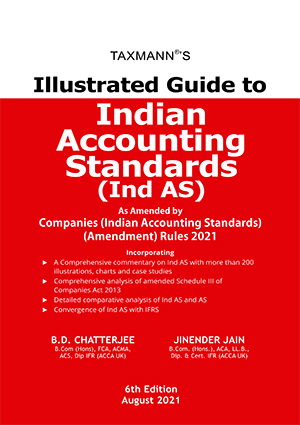Theory of Constraints – A tool for Identification and optimum utilization of resources
- Blog|
- 4 Min Read
- By Taxmann
- |
- Last Updated on 1 March, 2022
What is theory of constraints?
The aim is, to increase the throughput, minimize the investments and decrease operating expenses.
Key Measures in theory:
The theory of constraints focuses on three key measures:
1. Throughput:
It is the rate of generating money in an organization through sales. The direct labour cost is used as fixed unit level expenses and is not included in the variable cost.
2. Investment:
This is money associated with turning materials into throughput and do not have to be immediately expensed.
3. Operating Expense:
Money spent in turning investment into throughput and therefore, represent all other money that an organization spends.
Steps in theory of constraints:
This purpose of theory is achieved by the following steps. 1. To identify the bottleneck activity. 2. Ranking the products on the basis of contribution generated per unit use of bottleneck resource and to plan the product mix on the basis of this ranking. 3. Utilize all other resources subject to the bottleneck activity or resource, as per the production plan set in step 2 (supra). These other resources will remain idle and should be left so. If utilized to the fullest, work-in-progress inventory will pile up, thereby increasing the investments, which is not desirable.
Example:- Malabar industries manufactures two products, Product X and Product Y. Both the products require processing over two Machines, Machine 1 and Machine 2. The total hours available for Machine 1 is 500 hours and that of Machine 2 is 650 hours. The demand for the products X and Y are 100 units each. The following table shows the selling price, contribution per unit and the no. of machine hours required of each machine in manufacturing one unit of the product.
|
Product |
X |
Y |
|
Selling price per unit (Rs.) |
30 |
50 |
|
Contribution (Rs.) |
10 |
15 |
|
Machine 1 (Hour per unit) |
5 |
2 |
|
Machine 2 (Hour per unit) |
2 |
5 |
Step 1: Identify the bottleneck activity/Resource:
|
|
M/c 1 |
M/c 2 |
|
Hours required |
700 (5 × 100 + 2×100) |
700 (2 × 100 + 5×100) |
|
Hours available |
500 |
650 |
|
Ratio |
700/500 140% |
700/650 107.69% |
Step-2: Ranking the products as per Machine 1:
|
|
Product X |
Product Y |
|
Contribution |
10 |
5 |
|
Hours of M/c 1 |
5 |
2 |
|
Ratio |
10/5 = 2 |
15/2 = 7.5 |
|
Rank |
II |
I |
Step-3: Schedule the production of X and Y:
Since product Y is ranked 1, 100 units of Y will be made and the balance 300 hours will be utilized for making product X. Hence, 60 units of X can be manufactured.
The hours utilized of machine II will be:100×5 +60 X 2 = 620 therefore 30 hrs of machine 2 will be idle.
|
|
M/c 1 |
M/c 2 |
|
Hours required |
700 (5 × 100 + 2×100) |
700 (2 × 100 + 5×100) |
|
Hours available |
680 |
650 |
|
Ratio |
700/680 102.94% |
700/650 107.69% |
Now Machine 2 will be bottleneck. Step-5: Reschedule the production as per Machine 2. And optimize the production.
Disclaimer: The content/information published on the website is only for general information of the user and shall not be construed as legal advice. While the Taxmann has exercised reasonable efforts to ensure the veracity of information/content published, Taxmann shall be under no liability in any manner whatsoever for incorrect information, if any.

Taxmann Publications has a dedicated in-house Research & Editorial Team. This team consists of a team of Chartered Accountants, Company Secretaries, and Lawyers. This team works under the guidance and supervision of editor-in-chief Mr Rakesh Bhargava.
The Research and Editorial Team is responsible for developing reliable and accurate content for the readers. The team follows the six-sigma approach to achieve the benchmark of zero error in its publications and research platforms. The team ensures that the following publication guidelines are thoroughly followed while developing the content:
- The statutory material is obtained only from the authorized and reliable sources
- All the latest developments in the judicial and legislative fields are covered
- Prepare the analytical write-ups on current, controversial, and important issues to help the readers to understand the concept and its implications
- Every content published by Taxmann is complete, accurate and lucid
- All evidence-based statements are supported with proper reference to Section, Circular No., Notification No. or citations
- The golden rules of grammar, style and consistency are thoroughly followed
- Font and size that’s easy to read and remain consistent across all imprint and digital publications are applied






 CA | CS | CMA
CA | CS | CMA



Comments are closed.